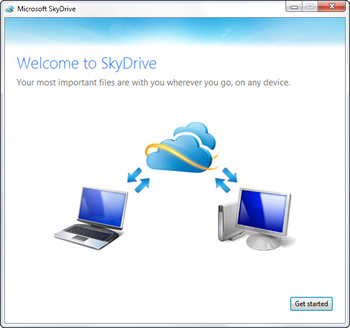Arguably one of the biggest changes coming to Office 2013 will be its much touted cloud integration. Microsoft took to its Office blog yesterday, posting numerous details regarding SkyDrive and what users can expect while working with Office 2013 online.
It appears Microsoft has put a great deal of effort into seamlessly integrating SkyDrive while simultaneously trying to overcome the offline-online conundrum users commonly worry about. For example, what happens if your Internet connection becomes slow or inaccessible? The company attempts to shed light on this concern among others.
One point Microsoft stresses is a "familiar experience". When users "Save As" a document, they will be presented all the usual locations we've come to expect (i.e. My Documents). However, in Office 2013, there will be a new option at their disposal – the user's SkyDrive. Saving a file to the cloud is very much like saving a file to your computer.
In an effort to combat sometimes unreliable Internet connectivity, SkyDrive will maintain local copies of cloud files on the user's computer. While offline, users will be able to work on their documents and save them as they normally would, without interruption. When an Internet connection is re-established, SkyDrive will automatically attempt to push and pull the latest files between the user's PC and the cloud.
One of the more interesting aspects of SkyDrive integration is the ability to do partial uploads and downloads. According to Microsoft, if a user adds just a single bullet point to a 50MB Power Point presentation, saving the document will only upload the XML for the bullet point itself. This avoids having to re-upload the entire 50MB file in its entirety after each miniscule change, saving bandwidth and allowing cloud-integration to work more smoothly on poor quality Internet connections. In order to do this, Microsoft's is leveraging its MS-FSSHTTP protocol which you can read more about here.
Similar to Google Docs, Office 2013 documents which are saved to a SkyDrive will allow for real-time collaboration. It also allows web-based Office 365 users co-author documents alongside their Windows desktop-client utilizing cohorts.
New features in Microsoft Office 2013 include a "flatter" look which borrows heavily from Windows 8's Metro interface and a greater focus on touchscreen accessibility, namely through the use of tiles and other finger-friendly UI changes. Office 2013 will also include bookmarks, apps, PDF editing, social networking support, Skype integration and various other improvements, changes and additions.
